eL Seed. Templates of Love

eL Seed. Templates of Love
Dal 25 November 2020 al 31 December 2020
Milano
Luogo: Sito web Galleria Patricia Armocida
Indirizzo: online
Telefono per informazioni: +39 0236519304
E-Mail info: info@galleriapatriciaarmocida.com
Sito ufficiale: http://www.galleriapatriciaarmocida.com
Galleria Patricia Armocida is pleased to announce the new solo show Templates of Love by the French-Tunisian artist eL Seed. Online opening only, from November 25th, 2020.
Templates of Love TEXT BY eL Seed
What is love? It’s an eternal question humanity is constantly seeking to answer. Try as we might that single word remains slippery, easy to say, harder to define, in different languages around the world it’s often a single word that contains multitudes.
In Arabic there are fifty words for love. It was a fact that struck me deeply when I first learnt it. Love in Arabic is not confined to a single shape, it moves in many phrases and expressions, it has many forms, and each carries its own name. In that expansion I discovered how love found new ways to linger in the language I was learning, and how that language had grown to encompass the varied forms love can take. I came to realise love cannot be contained. It is not a single thing, it lives among us, it is many-sided, multifaceted, at times literally: love comes to us with many faces. It’s a force that lives with and between many bodies and many minds. In this exhibition I wanted to explore and celebrate the myriad expressions of love that we can find in language and in the world.
I searched for the lines we follow, working to capture a sense of the varied shapes love can take. As I painted, putting pigment to canvas, it became a dance, a choreography of its own, a manifesting of love. Taking the architecture of the Arabic language I translated the words for love into my own personal script: loops of ribbon-like brushstrokes. The canvases became alters to the templates we are given for emotion through language, but also function as a creative key to understand the limits of form itself. When I look at the works, I have made collectively I now see that I didn’t use black ink as I normally do. At a dark time in history, I had instead moved away from the darkness. Love works to honour the light. Without even realising it I had adapted my process to the power of love: it called for something more from me.
Travelling to Murano in Italy I took this concept further, I worked with the glass masters in the furnace to once again transform these expressions of love into three dimensional sculptures. The fire spoke, the glass listened, love appeared as light, it was refracted, bent, and bound before my eyes. In the lucidity of glass, I found these structures of love I had designed came alive in a whole new way. The energy innates in their creation lingered: in light love found a new form. Love, I was reminded, it not merely a word, it is an action, a force that lives within us and changes and grows with every passing day. Learning to love, and learning the many forms that love can take, is work that takes a life- time. These works, these templates, are just part of that journey; a fragment of love trying to find its form.
eL Seed uses Arabic calligraphy and a distinctive style to spread messages of peace, unity and to underline the commonalities of human existence. His artwork can be found all over the world and consistently aim at unifying communities and redressing stereotypes.
Born in 1981 in Paris to Tunisian parents, he was disconnected from his Arabic roots, speaking only the Tunisian dialect of the language at home. In his teenage years in a kind of quest for his identity, he began to delve into his own heritage and learned to read and write standard Arabic. It was during this journey that he began to develop his artistic style of calligraphy, which would later bring him worldwide acclaim.
He found that Arabic calligraphy was a way of building a link between his equally important French and Tunisian backgrounds and as he matured, eL Seed began to use that same calligraphy as a tool to build bridges all over the world. Whenever he works within a community, he spends a long time researching to find an appropriate quote to summarise the voice of the community he is working within and to underline his key principals of love, respect and tolerance.
His work has been shown in exhibitions and in public places all over the world including most notably on the facade of L’Institut du Monde Arabe in Paris, in the favelas of Rio di Janeiro, on the DMZ in between North and South Korea, in the slums of Cape Town and in the heart of Cairo’s garbage collectors’ neighbourhood.
In 2017, he won the UNESCO Sharjah Prize for Arab Culture. He was named a Global Thinker in 2016 by Foreign Policy for his project ‘Perception’ in Cairo. In 2013, he collaborated with Louis Vuitton on their famous ‘Foulard d’Artiste’.
SCARICA IL COMUNICATO IN PDF
COMMENTI

-
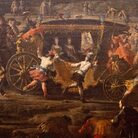 Dal 20 December 2025 al 20 April 2026
Caserta | Reggia di Caserta
Dal 20 December 2025 al 20 April 2026
Caserta | Reggia di Caserta
Regine: trame di cultura e diplomazia tra Napoli e l’Europa
-
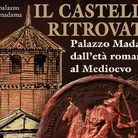 Dal 19 December 2025 al 23 March 2026
Torino | Palazzo Madama - Museo Civico d’Arte Antica
Dal 19 December 2025 al 23 March 2026
Torino | Palazzo Madama - Museo Civico d’Arte Antica
Il castello ritrovato. Palazzo Madama dall’età romana al medioevo
-
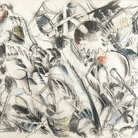 Dal 17 December 2025 al 19 January 2026
Roma | Palazzo della Cancelleria
Dal 17 December 2025 al 19 January 2026
Roma | Palazzo della Cancelleria
De Humana Mensura di Linda Karshan
-
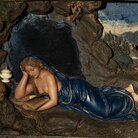 Dal 18 December 2025 al 12 April 2026
Firenze | Gallerie degli Uffizi
Dal 18 December 2025 al 12 April 2026
Firenze | Gallerie degli Uffizi
Cera una volta. Sculture dalle collezioni medicee
-
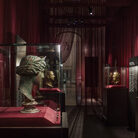 Dal 11 December 2025 al 9 April 2026
Firenze | Museo Archeologico Nazionale di Firenze
Dal 11 December 2025 al 9 April 2026
Firenze | Museo Archeologico Nazionale di Firenze
Icone di Potere e Bellezza
-
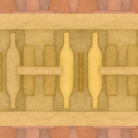 Dal 11 December 2025 al 11 January 2026
Roma | Palazzo Esposizioni Roma
Dal 11 December 2025 al 11 January 2026
Roma | Palazzo Esposizioni Roma
Giorgio Morandi nella Collezione Eni. Un viaggio attraverso la storia culturale del cane a sei zampe e l’eredità di Enrico Mattei


